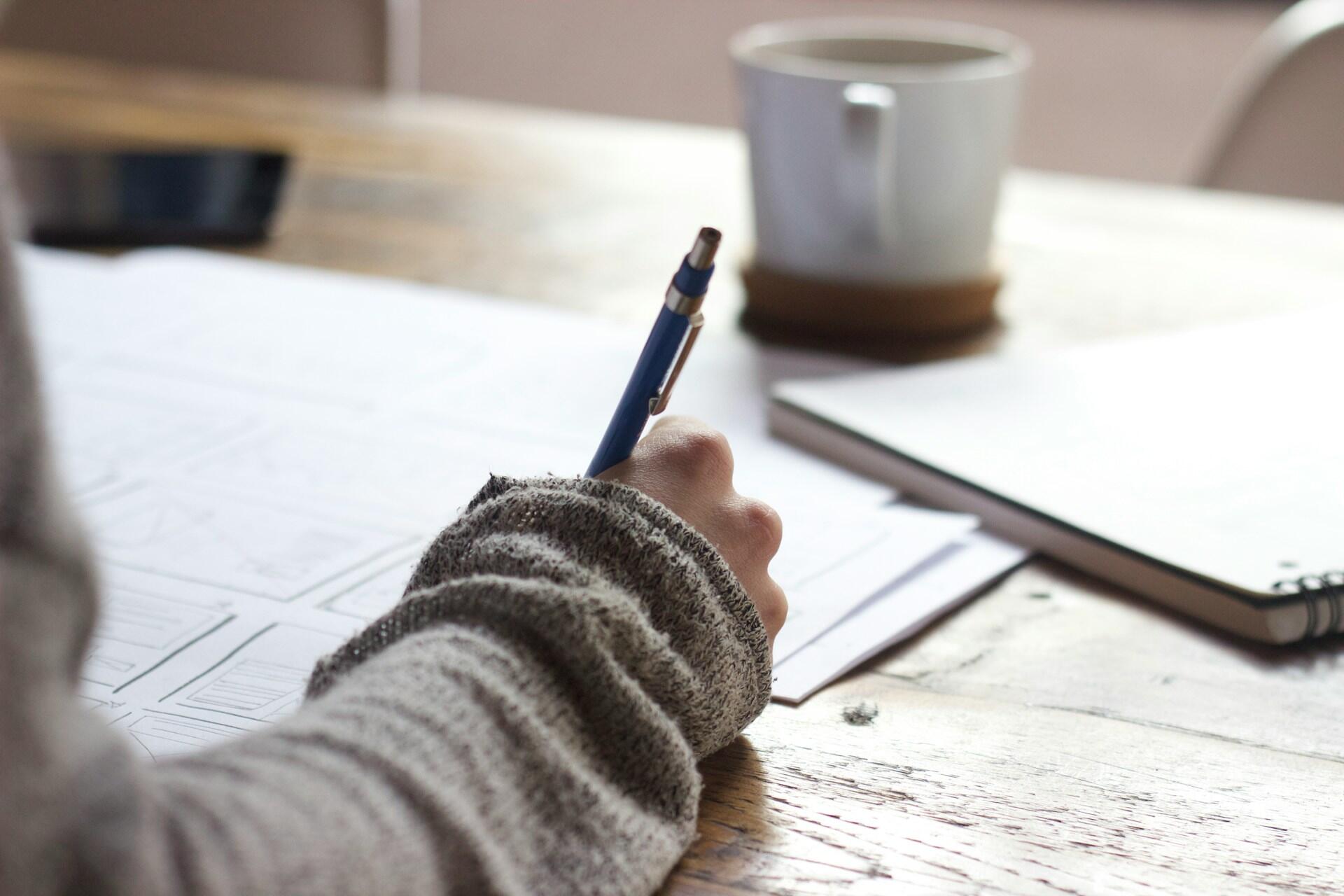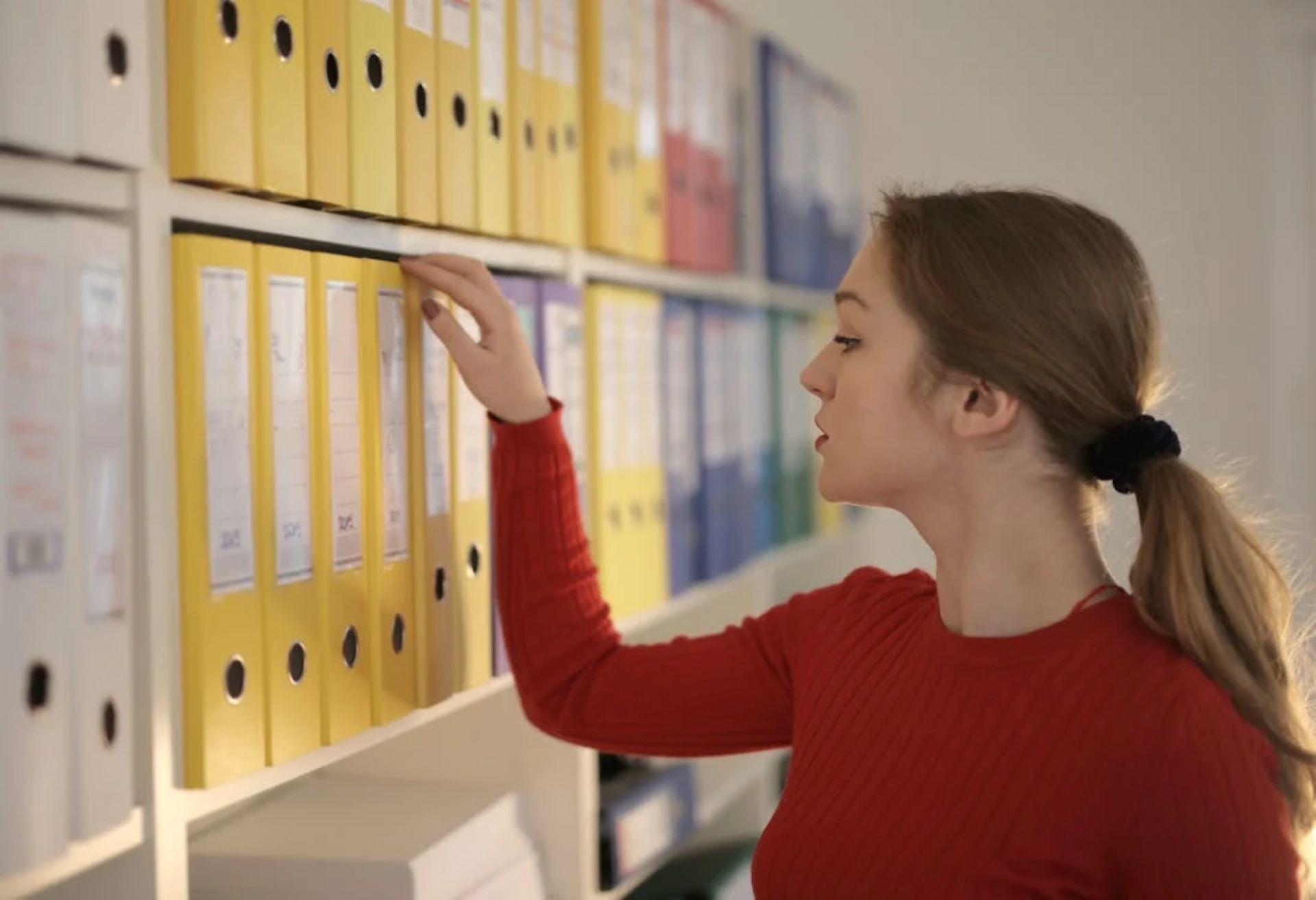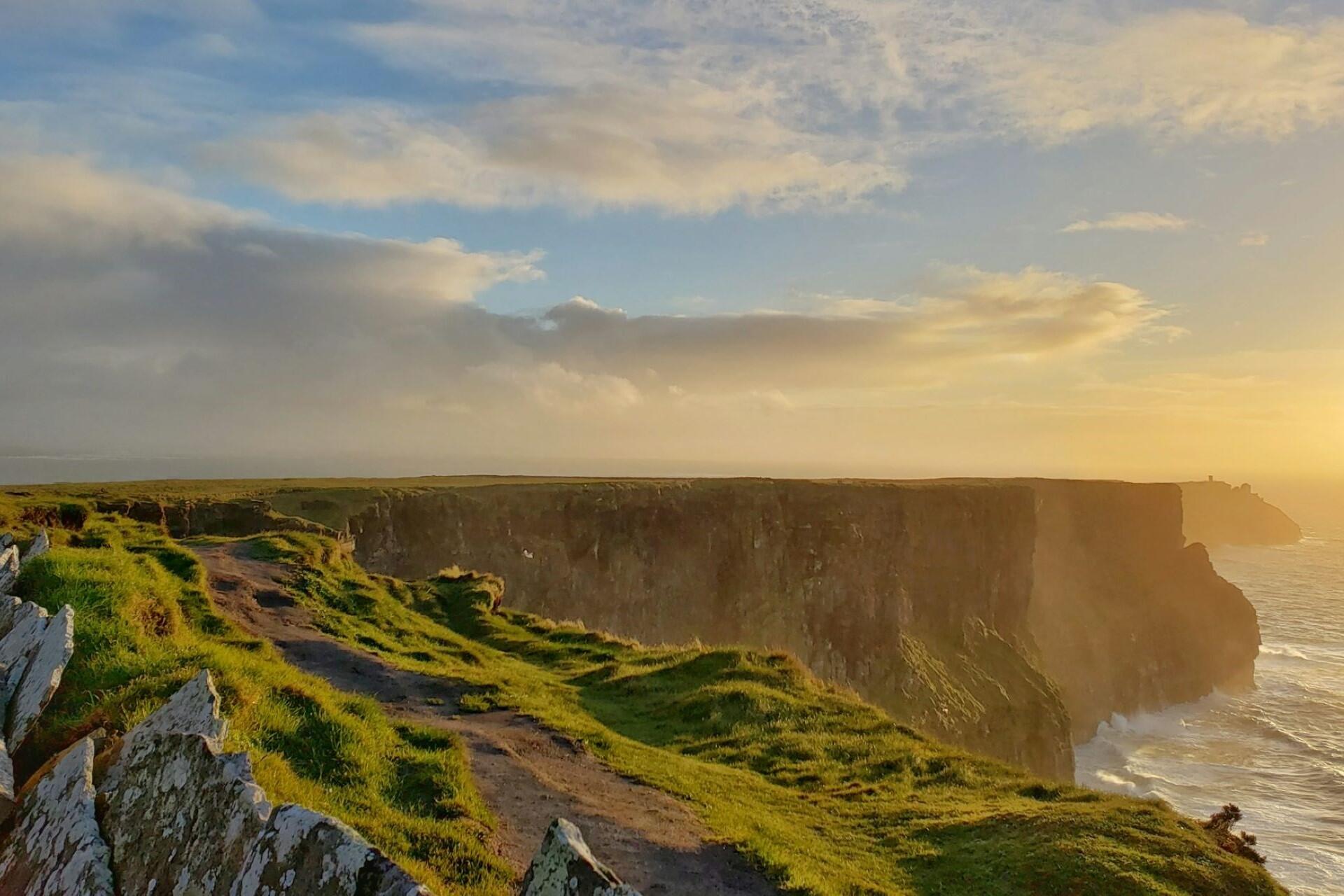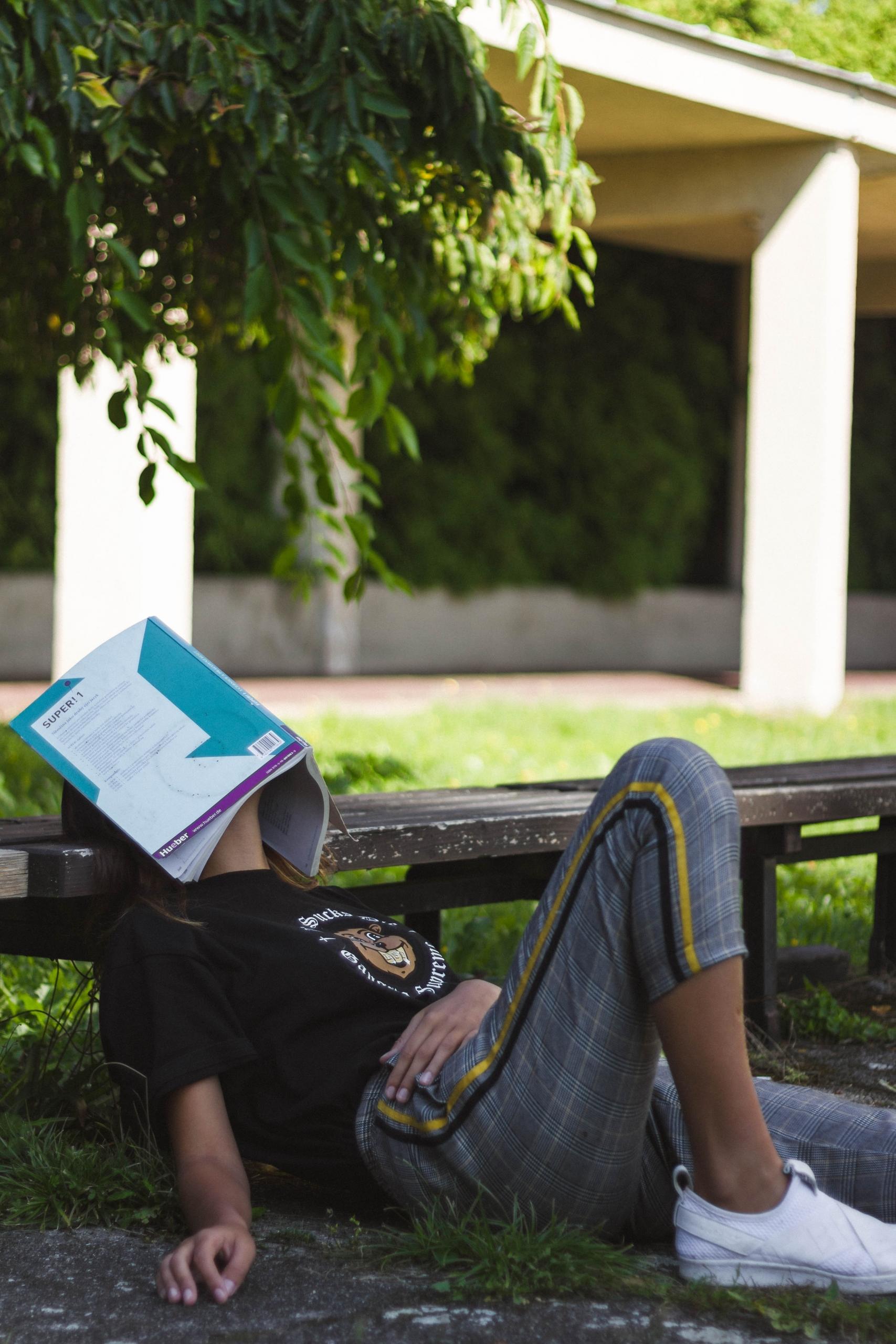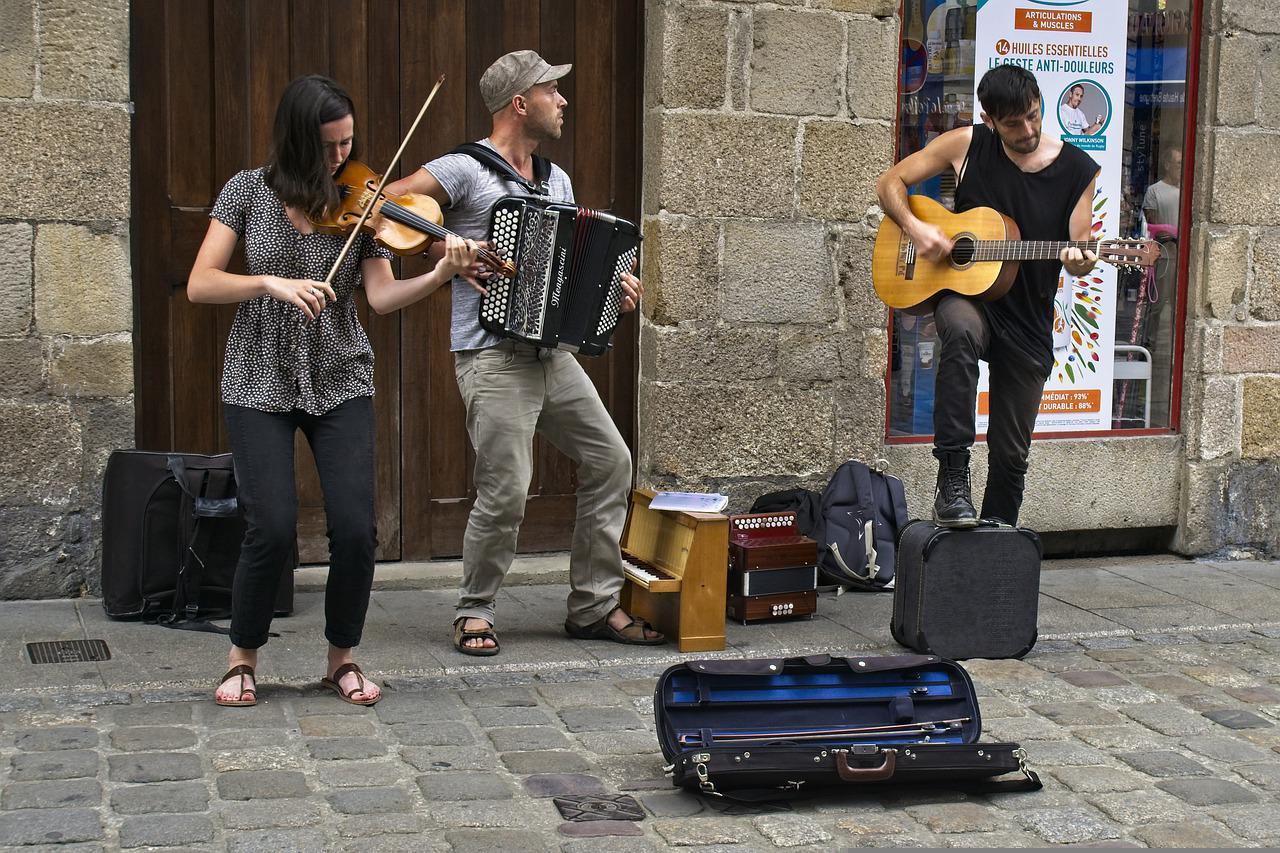The Irish language (Gaeilge) is an integral part of Irish culture, and every conversation starts with a greeting. Whether you're visiting Ireland, learning Gaelic phrases, or just interested in how people greet one another in Irish, you can learn several common greetings.
Irish greetings carry deeper meanings than their English counterparts, with phrases influenced by history, religion, and community values. Here, we'll learn how to say hello and goodbye in Irish, greetings for formal and informal situations, and how to respond to Irish greetings.

How to Say Hello in Irish
In Ireland, greeting people isn't just about saying “hello”. Irish greetings reflect the warmth, culture, and history of Ireland and the Irish people.
In English, "hello" is quite a neutral greeting, but as you'll see, Irish greetings have more meaning.
Common Ways to Say Hello in Irish
| Irish (Gaeilge) | Pronunciation | English Meaning |
|---|---|---|
| Dia duit | Dee-a gwitch | Hello (literally "God be with you") |
| Dia daoibh | Dee-a yeev | Hello (to multiple people) |
| Haigh | Hi | A more modern, informal way to say hello |
| Cén chaoi a bhfuil tú? | Kane khwee a will too? | How are you? (Used mostly in Connacht) |
| Conas atá tú? | Kun-us a-taw too? | How are you? (Common in Munster) |
| Cad é mar atá tú? | Cod-ay mar a-taw too? | How are you? (Ulster dialect) |
Unlike English, Irish greetings change depending on whether you address one person or multiple people. That's why we have "Dia duit" for one person and "Dia daoibh" for numerous people.

When to Use These Greetings
- Formal Settings: Dia duit / Dia daoibh (traditional greeting, respectful).
- Casual Conversations: Haigh (simple and modern).
- Checking In: Conas atá tú? (commonly used in daily interactions).
Essential Irish Greetings
Hello
Dia duit
(Dee-a gwitch)
How are you?
Conas atá tú?
(Kun-us a-taw too?)
Goodbye
Slán
(Slawn)
Common Irish Greetings for Different Situations
Like in many other languages, how you greet people in Irish depends on the time of day, formality, and the number of people you're greeting, with Irish numbers being another part of the Irish language you'll need to study. Here are some of the most useful greetings for different situations.

1. Greetings Based on the Time of Day
- Dia dhuit ar maidin (Dee-a gwitch ar mod-jin) – Good morning
- Tráthnóna maith (Trah-noh-nah mah) – Good afternoon/evening
- Oíche mhaith (Ee-ha wah) – Good night
2. Formal vs. Informal Greetings
- Go mbeannaí Dia duit (Guh myan-nee dee-a gwitch) – May God bless you (very formal)
- Haigh! (Hi!) – Informal and modern, used similarly to "hi" in English
Tip: If in doubt, "Dia duit" works in most formal or informal situations.
3. Greetings for Meeting Someone Again
- Fáilte romhat arís! (Fall-cha row-it a-reesh!) – Welcome back!
- Tá sé go deas tú a fheiceáil arís. (Taw shay guh jass too a ek-kyel a-reesh.) – It’s nice to see you again.
The phrase "Dia duit" (God be with you) is a traditional Irish greeting rooted in Ireland’s strong religious history. The response to this greeting is "Dia is Muire duit" (God and Mary be with you), showing the influence of Christian traditions on everyday language.

Words of Encouragement and Support in Irish
There are plenty of uplifting and motivational phrases in Irish. These phrases reflect the resilience and warmth that are ever-present in Irish culture. Whether you want to encourage a friend, offer support, or wish someone well, these phrases you'll need.

1. General Words of Encouragement
- Coinnigh ort! (Kun-nee ort!) – Keep going!
- Tá tú ar fheabhas! (Taw too ar ow-us!) – You’re doing great!
- Ná tabhair suas! (Naw to-wer sooss!) – Don’t give up!
- Leanaigí oraibh! (Lan-a-gee ur-iv!) – Keep at it! (plural)
2. Wishing Someone Good Luck
- Go n-éirí an t-ádh leat! (Guh nye-ree un taw lat!) – May luck rise with you!
- Go n-éirí leat! (Guh nye-ree lat!) – Best of luck!
- Beir bua! (Ber boo-ah!) – Seize victory!
3. Offering Support and Kindness
- Tá mé anseo duit. (Taw may an-shuh ditch.) – I’m here for you.
- Bí cúramach ort féin. (Bee koo-ra-mahkh ort fayne.) – Take care of yourself.
- Ní bheidh tú i d’aonar. (Nee vehg too i do-nur.) – You won’t be alone.
In traditional Irish culture, words of encouragement were often given as blessings. Many Irish sayings include expressions of luck, resilience, and perseverance, showing the importance of supporting one another in daily life.
Irish Words of Condolence and Sympathy
Sometimes, particularly in times of loss or hardship, it's important to know ways to express sympathy, comfort, or support. Fortunately, the Irish language has many phrases with a deep sense of warmth and compassion. Here are some of the ones you could use.
1. General Condolences
- Tá brón orm. (Taw brohn ur-um.) – I am sorry.
- Táim buartha duit. (Taw-im boo-ar-ha ditch.) – I am sorry for you.
- Mo chomhbhrón ort. (Muh khoh-vrone ort.) – My condolences to you.
2. Expressing Sympathy for a Loss
- Ar dheis Dé go raibh a anam. (Ar yesh jay guh rev a ah-num.) – May their soul be at the right hand of God.
- Suaimhneas síoraí dá anam. (Soo-iv-nyas shee-ree daw ah-num.) – Eternal peace to their soul.
- Guím suaimhneas duit. (Gweem soo-iv-nyas ditch.) – I wish you peace.
3. Offering Comfort and Support
- Táim anseo duit má tá cabhair uait. (Taw-im an-shuh ditch maw taw cow-er oo-it.) – I’m here for you if you need help.
- Bíodh do chroí socair. (Bee-och duh khree su-kar.) – May your heart be at peace.
- Ní bheidh tú i d’aonar. (Nee vehg too i do-nur.) – You won’t be alone.
In Irish culture, wakes and funerals are important community events where people come together to share stories, offer comfort, and celebrate the life of the deceased. Many Irish condolence phrases have spiritual roots, reflecting the strong connection between language, faith, and tradition.
How to Respond to Common Irish Greetings
It is important to produce Irish greetings and expressions, but to converse, you have to be able to respond properly to them any day of the week, too. Irish greetings often have set responses, particularly for phrases like "Dia duit".

Here is how you can respond to some of the most common greetings in Irish.
1. Responding to “Hello” (Dia Duit)
- Greeting: Dia duit! (Dee-a gwitch!) – Hello!
- Response: Dia is Muire duit! (Dee-a iss Mwir-eh gwitch!) – God and Mary be with you!
Tip: The traditional Irish greeting is a blessing, and the response continues the blessing by adding the Virgin Mary (Muire).
2. Responding to “How Are You?”
- Greeting: Conas atá tú? (Kun-us a-taw too?) – How are you?
- Responses:
- Tá mé go maith. (Taw may guh mah.) – I am good.
- Níl mé ródhona. (Neel may roh-hun-ah.) – I’m not too bad.
- Tá mé tuirseach traochta! (Taw may tir-shock tree-ohk-ta!) – I am exhausted!
3. Responding to “Goodbye” (Slán)
- Greeting: Slán! (Slawn!) – Goodbye!
- Responses:
- Slán leat! (Slawn lyat!) – Goodbye (to one person).
- Slán libh! (Slawn liv!) – Goodbye (to multiple people).
- Go n-éirí an bóthar leat! (Guh nye-ree an boh-har lyat!) – May the road rise to meet you!
Tip: "Slán" literally means "safe", so saying "Slán leat" is like wishing someone safety on their journey.
4. Responding to Words of Encouragement or Sympathy
- Greeting: Go n-éirí leat! (Guh nye-ree lat!) – Best of luck!
- Response: Go raibh maith agat! (Guh rev mah ah-gut!) – Thank you!
- Greeting: Mo chomhbhrón ort. (Muh khoh-vrone ort.) – My condolences to you.
- Response: Go raibh maith agat as do chineáltas. (Guh rev mah ah-gut oss duh kin-awl-tuss.) – Thank you for your kindness.
Using Irish Greetings in Everyday Life
Learning Irish or any other language is more than just learning the words. You need to connect with the culture and use your new language. With Irish, the greetings certainly reflect the warmth, tradition, and sense of community that's embedded in Irish culture, with some terms even affecting Irish English and the accompanying slang.
Whether you're choosing to greet someone with “Dia duit”, offering encouragement with “Go n-éirí leat”, or expressing sympathy with “Mo chomhbhrón ort”, you can deepen your understanding of appreciation of the language simply by using it.
These greetings are a great first step for those just starting their journeys into the Irish language, but we have some tips for you if you want to keep going.
- Practice daily: Try greeting friends or family in Irish, even just saying Dia duit!
- Watch and listen: Tune into TG4 or Raidió na Gaeltachta to hear Irish in real conversations.
- Join language groups: Engage with Irish learners online or attend a local Gaeilge meetup.
- Use apps & resources: Free language apps like Duolingo or Teanglann.ie can help with pronunciation and vocabulary for everything from basic colours to more advanced terms.
The more you hear and use the Irish language, the more natural it will all become. After all, this is how everybody learns their first language, and there's no better way to learn a second language than by immersing yourself in it and the accompanying culture!
If you'd like to learn more about Irish history, culture, or language, just search for a tutor on the Superprof website! Most offer the first session for free so you can always try a few before choosing the right one for you.
















